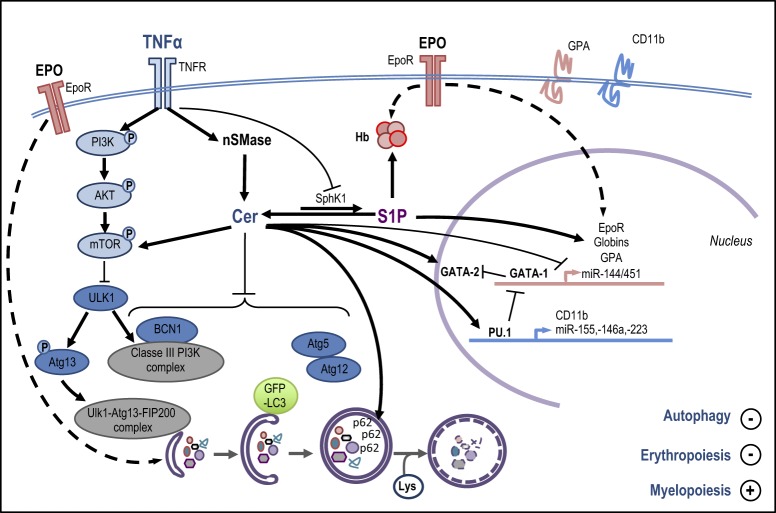Fig. 6.
Erythropoietin (Epo) binds to the Epo receptor (EpoR) to activate erythroid-specific gene transcription (EpoR, globins, glycophorin A (GPA), and miR-144/451) by GATA-1, resulting in hemoglobin (Hb) production. Epo-induced erythropoiesis is concomitant with autophagy flux induction. TNFα binds its receptor TNFR to activate neutral sphingomyelinase (nSMase) catalyzing ceramide (Cer) production. Ceramides inhibit erythroid gene expression and induce GATA-2, PU.1, CD11b, and miR-155, -146a, and -223 expression. TNFα inhibits SphK1 leading to a ceramide/S1P unbalanced reaction. S1P has a positive effect on Hb production and erythroid marker expression. TNFα and ceramides inhibit autophagy. TNFα phosphorylates mTOR (P-mTOR) via the PI3K/AKT pathway, while ceramide activates mTOR through a different mechanism. P-mTOR leads to ULK1 inhibition and the subsequent Atg13 dephosphorylation. TNFα and ceramides inhibit Beclin-1 (BCN1) expression, the formation of the Atg5-Atg12 complex, GFP-LC3 punctae, and autophagosomes, and induce p62/SQSTM1 accumulation. Together, the effects triggered by the TNFα/neutral SMase/ceramide pathway at the molecular level lead to autophagy and erythropoiesis inhibition and myelopoiesis induction

